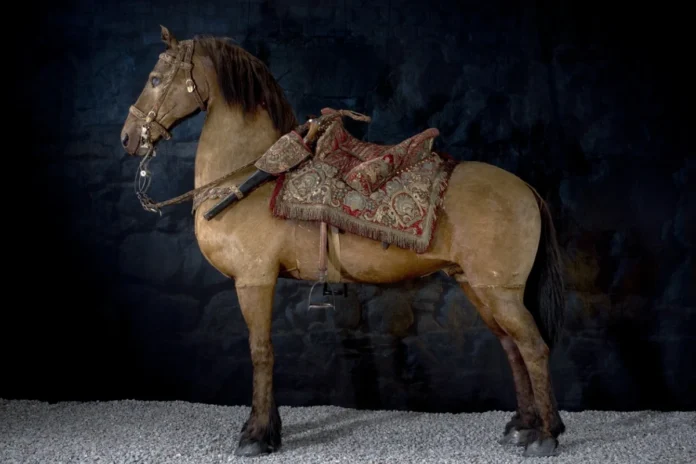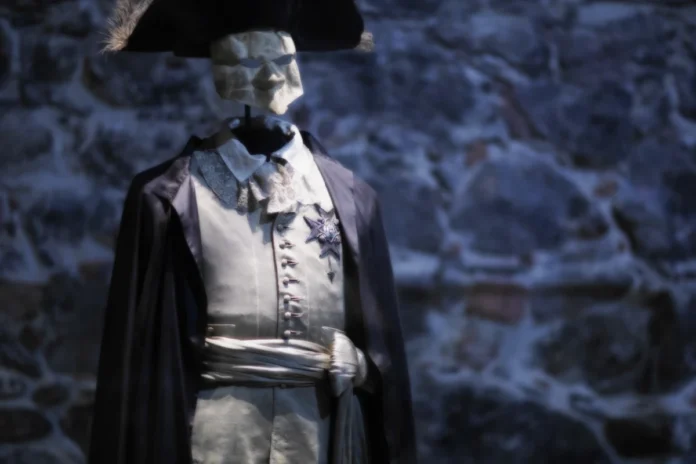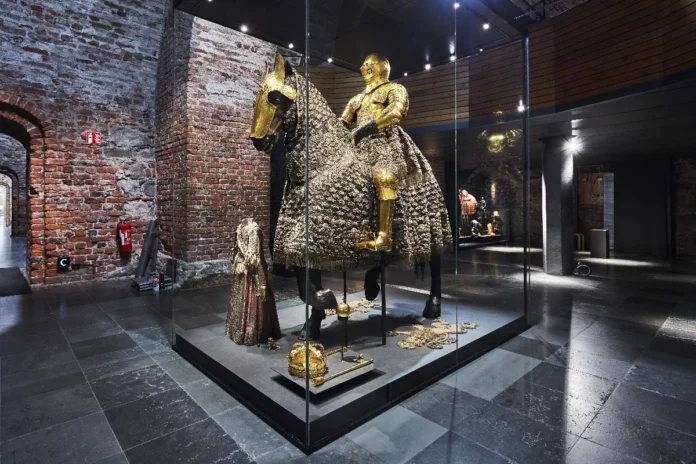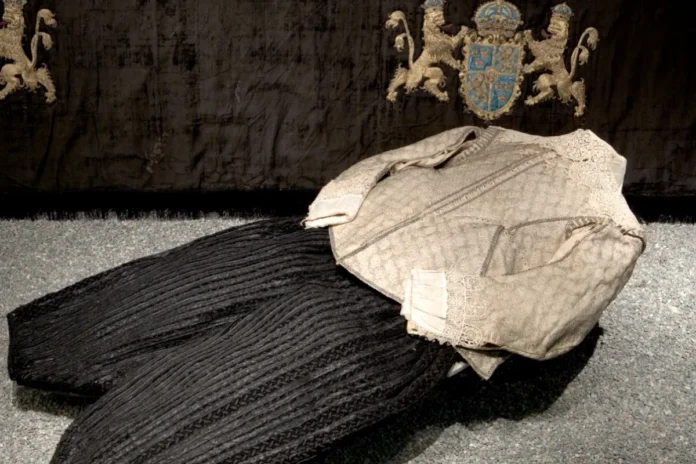A treasure trove of Swedish royal clothing and artifacts
A fascinating collection that creates a colorful tapestry of history can be found in the Royal Armoury (Livrustkammaren), which is housed in the vault of the Royal Palace in Stockholm.
The museum displays elaborate pieces of ancient Swedish armor, carriages, weapons, coronation attire, and royal costumes. Additionally, beautiful state coaches from the 17th and 18th centuries complete this treasure trove of history.
Preserving centuries of regal heritage
Originating in the 16th century, the Royal Armoury is among the world’s oldest museums, proving its enduring significance. After the Polish campaign of 1628, King Gustav II Adolph was determined to preserve his campaign garb, which is why the museum was founded.
This decision highlights its significance. The King proclaimed this with the words ‘uthi Rust-Cammaren till en evig åminnelse.’. This translated into English means ‘in the Armoury for everlasting remembrance.‘.
Royal memories, blood, and battles: eerie historical relics
The Royal Armoury’s superb collection of royal costumes from the 17th and 18th centuries is one of its most remarkable features. Gustav II Adolph‘s bloodstained shirt from the pivotal battle at Lützen in 1632, in particular, represents a turning point in the Thirty Years’ War.
Gustav III‘s eerie 1792 assassination costume is also on display at the museum. The incident, which took place at a masquerade ball at Stockholm’s Royal Opera, serves as a terrifying reminder of this moment in history.
Additionally, visitors can examine Karl XII‘s (1682–1718) uniform from his death in the trenches at Fredriksten, Norway.
Nearby attractions to the Livrustkammaren
- The Royal Palace itself, which houses a number of museums, including the Treasury and the Royal Apartments, provides guided tours.
- The German Church and Storkyrkan are well-known for their beautiful architecture and historical significance.
- The Nobel Prize Museum features the award’s history and recipients.
- The Riddarholmen Church is where Swedish kings and nobles are finally buried.
Visitors can easily visit multiple local locations in a single day because these attractions are all within walking distance of one another.








